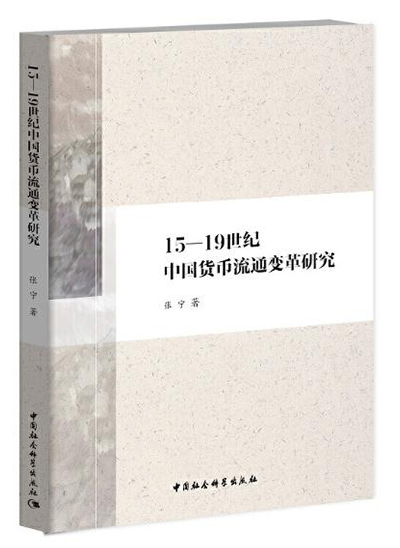A monetary history in Ming and Qing eras

A Study on the Changes in Chinese Currency Circulation Between the 15th and 19th Centuries
A Study on the Changes in Chinese Currency Circulation Between the 15th and 19th Centuries, by Zhang Ning, a professor from the School of History and Culture at Hubei University, centers on the monetary and financial history of Ming (1368–1644) and Qing (1644–1911) dynasties—the formation and evolution of the monetary system that combined silver ingots and copper coins.
The book breaks through the demarcation line of the Ming and Qing eras, with currency circulation as the principal line. It not only clarifies the formulation and implementation process of national monetary policy from the top down, but also the actual situation of folk currency circulation from the bottom up, highlighting regional differences and characteristics. In exploring the evolution of the monetary system in which silver ingots and copper coins were used simultaneously, the author emphasizes the strengths and weaknesses of each as circulating currencies, opposing the traditional view that attaches more importance to silver than to coins.
Employing the method of regional analysis, Zhang aims to construct an analytical framework of financial geography. China is a vast territory divided by a great many mountains and rivers. When ancient transportation was undeveloped and regional economic links and market integration were relatively backward, the country formed relatively independent economic zones with respective characteristics and corresponding currency areas. The regional variations of money circulation in the Ming and Qing were built on historical, economic, and geographical patterns. It was influenced by multiple factors, such as the geographical location of money production and inflow, trade routes, the flow of merchant groups, and urban-rural disparities. The book clearly shows for the first time the distribution of the “land of coins” and “land of silver,” which took shape in the mid-Ming and exerted influence until the early Qing, while summarizing the formation process of four major currency areas from the mid-Qing to the eve of the First Opium War (1840–42).
Certain antiquated concepts still limit mainstream understanding of monetary history, especially the long-held view that “silver ingots served large figures and copper coins served small figures.” Through rigorous research, the author casts reasonable and well-founded doubt on this theory. It was a universal law in the two stages of the system of combined use of silver ingots and copper coins, but it only worked to a limited extent. Silver ingots and copper coins in folk currency circulation often did not abide by the above-mentioned boundary, but invaded each other’s sphere of influence.
Yang Guo’an is a professor from the School of History at Wuhan University.
Edited by YANG LANLAN

 PRINT
PRINT CLOSE
CLOSE